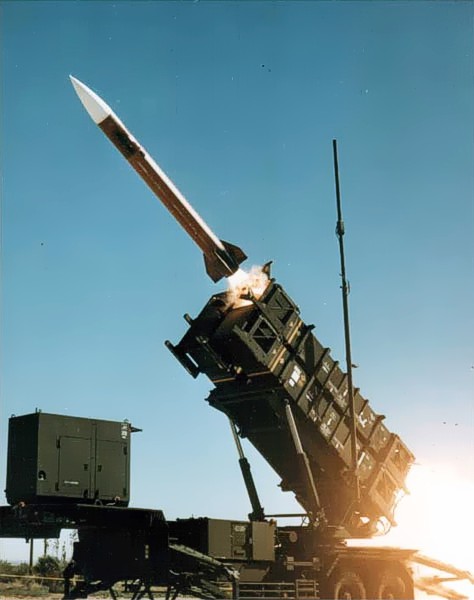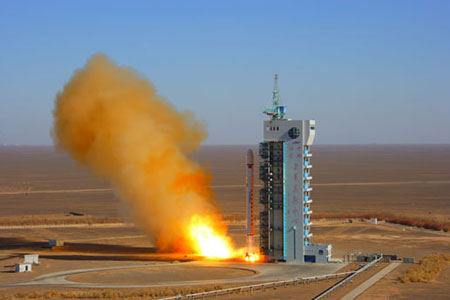
Shipbuilding partners Austal USA and General Dynamics have agreed to revoke their teaming arrangement on the Littoral Combat Ship (LCS) program - a move that positions Austal to bid as a prime contractor on this year's bid for 10 LCS ships for the U.S. Navy, and allows GD to go after another five ships to be awarded in 2012.
"We are now acting as prime going forward on the LCS program," Austal president Joseph Rella told Defense News March 4.
The announcement was first made through the ASX Australian Securities Exchange Friday morning Australian time. Austal USA's parent company, Austal, is headquartered in Henderson, Western Australia.
The move - first reported in January to be in the works - is a direct response to a new acquisition strategy announced by Navy officials last September. Navy acquisition chief Sean Stackley, in a bid to increase competitive elements in the LCS program, declared the Navy would choose between a steel-hull design offered by Lockheed Martin and an aluminum trimaran from the GD/Austal USA team. An initial award to one shipyard of two ships with options for eight more is to be followed in two years by a five-ship award to a second-source shipyard. The new hitch - the second shipyard could have no affiliation with the first.
That set the stage for the GD/Austal split, since GD all along has wanted to build LCS ships in its Bath, Maine, shipyard. Recently, the company has been considering LCS construction at its National Steel and Shipbuilding Company (NASSCO) yard in San Diego, which needs orders for new ships. But the Navy's new rules would prohibit GD's yards from building LCS ships should the service choose the trimaran design and the partnership continue.
The split positions either Bath Iron Works or NASSCO to bid on the five-ship offering in 2012.
General Dynamics has no intention of bidding on the 10-ship award to be issued this year, said spokesman Jim DeMartini.
Both companies will continue their original relationship with GD as prime contractor to complete the Coronado (LCS 4), the second LCS being produced by the partners. The team's first ship, Independence (LCS 2), was delivered to the Navy in December.
GD's Advanced Information Systems (AIS) division will continue as a team partner and become a subcontractor to Austal to handle systems integration.
Austal, Coming of Age
The split is seen as a further coming-of-age development for Austal USA, established in 1999 at Mobile, Ala. The company has built several aluminum ships for commercial customers and won a competition in 2008 to build the Joint High Speed Vessel (JHSV) for both the U.S. Army and Navy. Those ships are being constructed in a new, state-of-the-art facility in Mobile that can be doubled in size should the company win further orders.
"We feel that being awarded the prime on the Joint High-Speed Vessel was a significant statement by the Navy that we are able to be prime on major acquisition programs," Rella said. "The fact that the Navy has stated that any member of the team on either bidder would be suitable as a prime contractor further affirms Austal's position as a mature and stable shipbuilder ready to take on a U.S. naval combatant."
The relationship between Austal, experienced at building high-speed aluminum ships for commercial customers, and GD's Bath Iron Works, one of the U.S. Navy's oldest and most experienced shipbuilders, has not always been comfortable, but both companies have stressed in recent months that those difference have largely been worked out.
"The reason this happened was not because of a falling-out," Rella said.
"The word 'revoke' has a negative connotation, but [the relationship] was anything but that," he said. "We had a very symbiotic relationship where we also learned from GD/BIW, and GD/AIS for that matter. And we feel that our commercial derivatives have shown BIW that there are efficiencies associated with commercial shipbuilding that can be applied to U.S. naval construction."
David Heebner, head of GD's three shipyards, did not reveal the new relationship while speaking with a reporter Wednesday evening after he appeared before Congress; he characterized the relationship between GD and Austal as "terrific."
"I think if you talk to them, you talk to us, you'd get either one of us to say we've had a terrific relationship," Heebner said. "We've learned from them, they've learned from us in the process. We've certainly helped them in the context of building warships, which is not really where they came from.
"I know we did something good together. So we'll have this marriage between us and Austal for a very long time because we did something good together," Heebner said.
As to whether Bath or NASSCO would build the LCS, Heebner said, "I have multiple shipyards within General Dynamics capable of building either one of those ships."
Appearing before Congress with Heebner, Mike Petters, Northrop Grumman's top shipbuilding executive, confirmed Wednesday that Northrop, which is not now involved as a shipbuilder in the LCS program, is considering bidding in the 2012 competition, regardless of which design is chosen.
"That demonstrates there is nothing exotic, nothing to prevent other shipyards from building our variant of the LCS," Rella said in reaction to that news. "It demonstrates that the industrial capability exists for a robust competition for a second-source shipbuilder."
Final bids in the LCS competition are expected to be delivered to the Navy by April 12. The service will announce its decision in late spring or early summer, Stackley said.
Ultimately the Navy plans to build a 55-ship LCS fleet, although the service projects to buy more than 60 of the ships over the next 30 years, including replacements for the earliest ships. ■
Full Text: General Dynamics Statement On Its LCS Team Realignment
The Navy's decision to modify its Littoral Combat Ship acquisition strategy prompted examination of the GD LCS Team's original business construct which established General Dynamics Bath Iron Works, as prime contractor, and Austal USA as the General Dynamics LCS Team's shipbuilder. Primary objectives were to determine how best to support the Navy's procurement plan while simultaneously maximizing the probability of a successful outcome for General Dynamics and Austal USA.
A mutual decision to terminate the original business arrangement between Bath Iron Works and Austal USA for the ships being procured under the Navy's current LCS solicitation was reached. This agreement enables Austal USA to respond to the Navy's current solicitation as the prime contractor for the high speed aluminum trimaran platform, with General Dynamics Advanced Information Systems continuing its role as systems integrator, while preserving Bath Iron Works' opportunity to compete in FY 12 under the Navy's current acquisition plan, to become the second source for future Littoral Combat Ships.
Under its current contract for construction of Coronado (LCS 4), Bath Iron Works will continue its role as prime contractor through delivery of that ship in 2012.
General Dynamics remains fully confident in the capability of the trimaran platform and its highly flexible core mission systems. This decision fully supports the Navy's acquisition objectives, provides for effective competition for the FY 10 ships and is in the best interests of General Dynamics.
Full Text: Austal Announcment On Its LCS Team Realignment
Austal USA and Bath Iron Works (BIW) have agreed to revoke their current teaming arrangement. This strategic decision allows Austal USA to act as Prime Contractor in the upcoming bid for 10 US Navy Littoral Combat Ships (LCS).
The US Navy is expected to award the contract for two LCSs, including options for an additional eight vessels, by the end of US FY10. In the event that Austal USA is awarded the FY10 contract, potentially worth up to US$4.8 billion, it will continue to act as Prime Contractor for future LCS bids.
General Dynamics Advanced Information Systems, which is currently the systems integrator in the program, will now subcontract to Austal USA, as it currently does in the Joint High Speed Vessel (JHSV) program, providing open architecture systems that deliver better, faster and more affordable capability.
In reaction to Austal's decision to act as prime contractor for its future in the LCS program, Joe Rella, Austal USA President and Chief Operating Officer, commented, "Working with BIW, whom we hold in the highest regard as one of the best surface naval shipbuilders in the world, has enabled us to achieve a level of maturity and experience to be a Prime Shipbuilder of US Naval Combatants, and we are ready to take on this new leadership role in the LCS program."
The U.S. Navy has also determined that an additional five-ship contract, to be awarded in FY12, shall not be awarded to the same contractor as the 10-ship contract. Therefore, revoking the current agreement will allow BIW to bid as the second source LCS shipbuilder.
BIW will continue to act as Prime Contractor for Austal's second LCS, Coronado (LCS 4), which is currently under construction at Austal USA and due for completion in 2012.
The Austal-designed and built Littoral Combat Ship, USS Independence (LCS 2), officially joined the operating forces of the United States Navy at an historic commissioning ceremony held near Austal's Mobile, Alabama facility on January 18, 2010. The 127-meter all-aluminium vessel is capable of being outfitted with reconfigurable payloads (Mission Packages) which can be changed quickly to support mine countermeasure, anti-submarine and surface warfare missions. The lightweight and fuel efficient vessel has a maximum speed of more than 45 knots.
As Prime contractor, Austal was awarded the construction contract for the first 103-meter Joint High Speed Vessel (JHSV), the US Department of Defense's next generation multi-use platform, in November 2008, with options for nine additional vessels expected to be exercised between FY09 and FY13. Austal received authorization from the Navy to start construction on JHSV 1 in December 2009 after completing the rigorous design in a 12-month period. On January 28, 2010, Austal was instructed by the Navy to move forward with the construction contract for the second and third JHSVs, as part of a total 10-ship program potentially worth over US$1.6 billion.
Austal is teamed with General Dynamics Advanced Information Systems who will design, integrate, and test the ship's electronic systems, including an Open Architecture Computing Infrastructure, internal and external communications, electronic navigation, aviation, and armament systems.




























